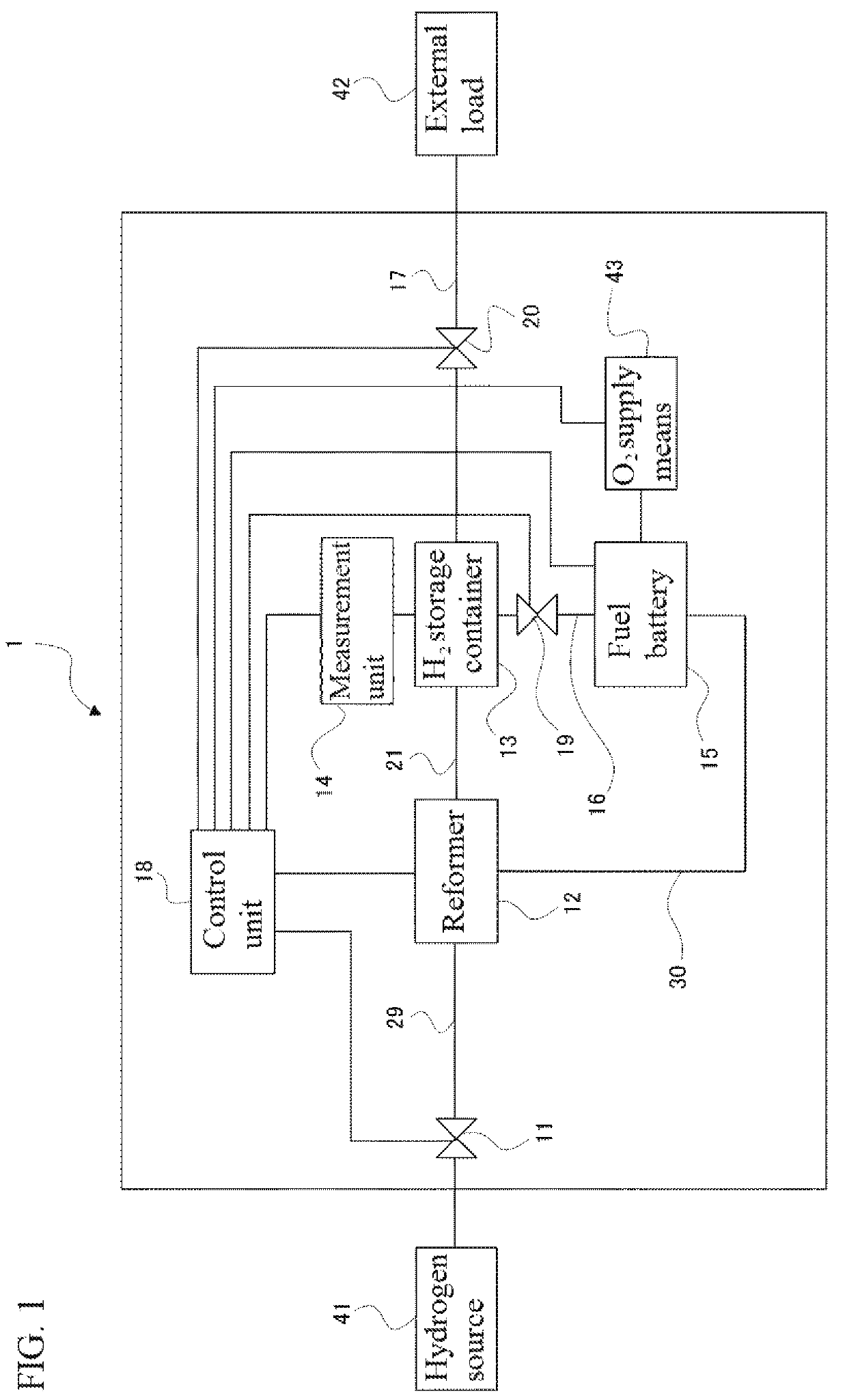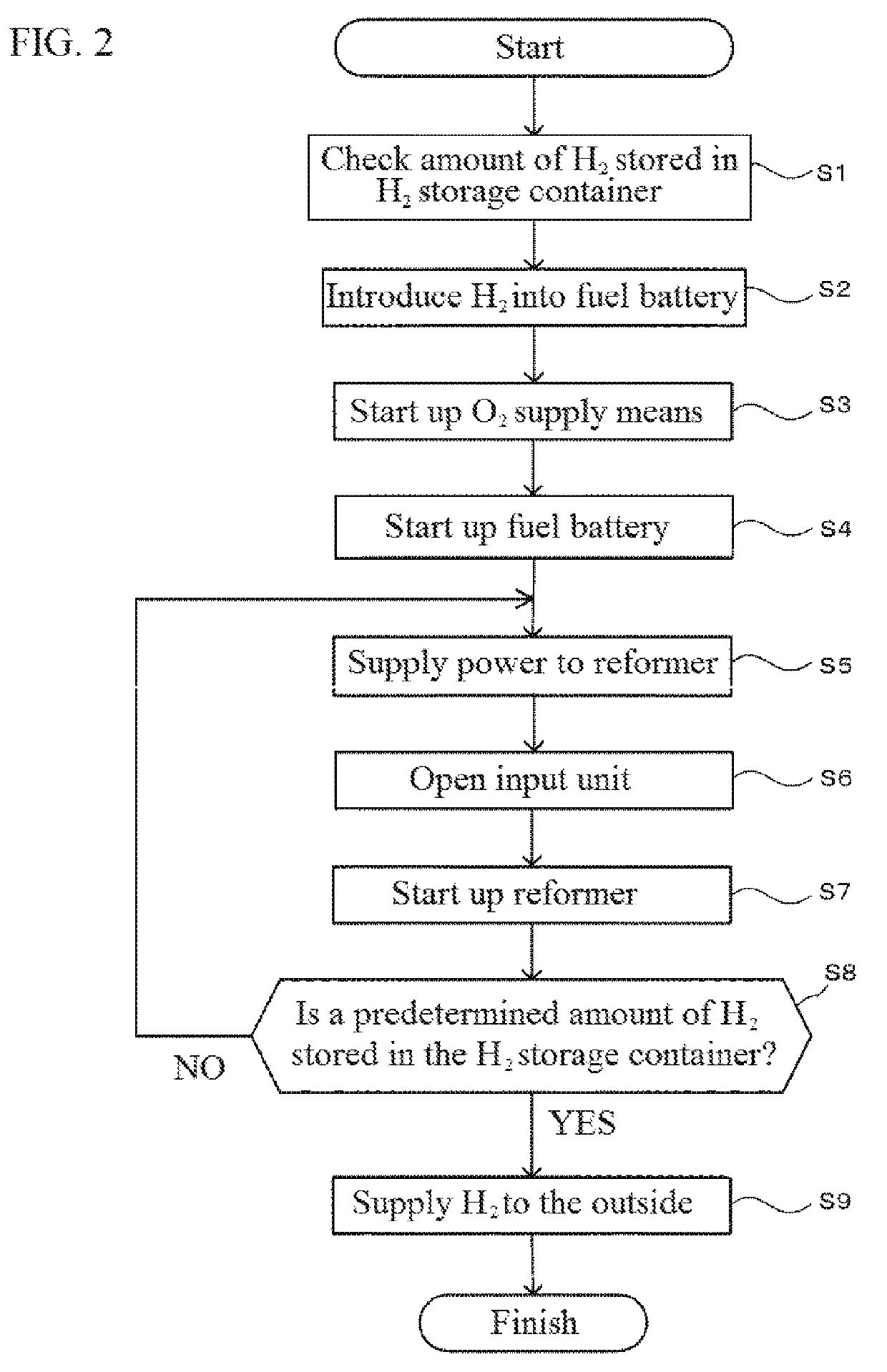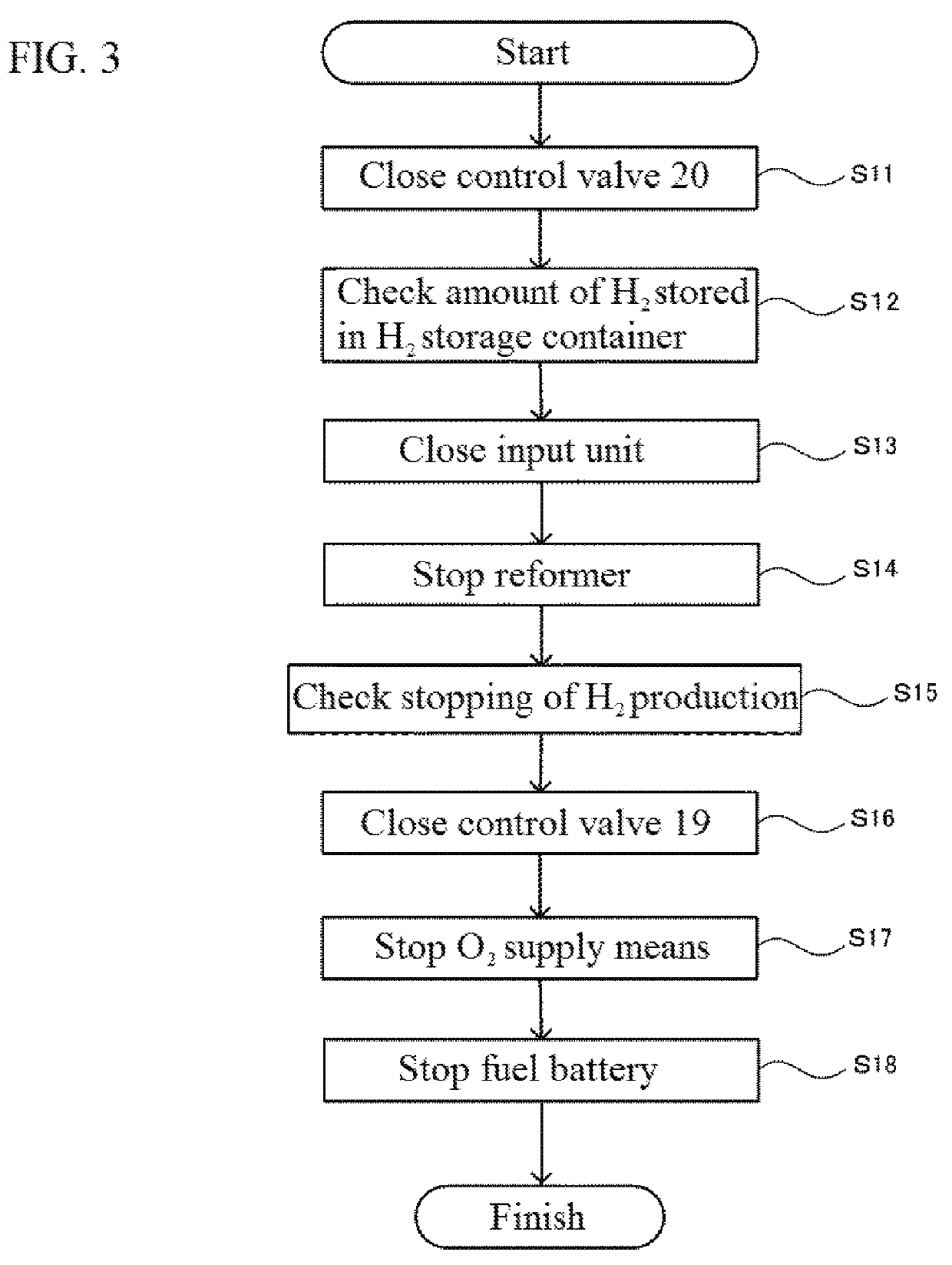Hydrogen-Producing Device and Operation Method of Hydrogen-Producing Device
- Summary
- Abstract
- Description
- Claims
- Application Information
AI Technical Summary
Benefits of technology
Problems solved by technology
Method used
Image
Examples
examples
[0048]Below is shown an Example of autonomous start-up of the hydrogen-producing device 1 including the reformer 12 and the fuel battery 15. The present Example employs as the fuel battery 15 a solid polymer fuel battery having a start-up hydrogen amount of 50 liters (0.05 m3) at 0.1 MPa (1 standard atmosphere).
[0049]In the present Example, a pressure gauge is employed as the measurement unit 14 for measuring the storage amount of the hydrogen-containing gas in the hydrogen storage container 13. The control unit 18 stores a threshold value of pressure corresponding to the amount of hydrogen-containing gas necessary for start-up of the fuel battery 15. During hydrogen production, the control unit 18 monitors the measured results of the measurement unit 14, and performs feedback control of the amount of hydrogen-containing gas produced by the reformer 12 and the storage amount of the hydrogen storage container 13 using the results of a comparison of the stored threshold value with the...
PUM
 Login to View More
Login to View More Abstract
Description
Claims
Application Information
 Login to View More
Login to View More - R&D
- Intellectual Property
- Life Sciences
- Materials
- Tech Scout
- Unparalleled Data Quality
- Higher Quality Content
- 60% Fewer Hallucinations
Browse by: Latest US Patents, China's latest patents, Technical Efficacy Thesaurus, Application Domain, Technology Topic, Popular Technical Reports.
© 2025 PatSnap. All rights reserved.Legal|Privacy policy|Modern Slavery Act Transparency Statement|Sitemap|About US| Contact US: help@patsnap.com



